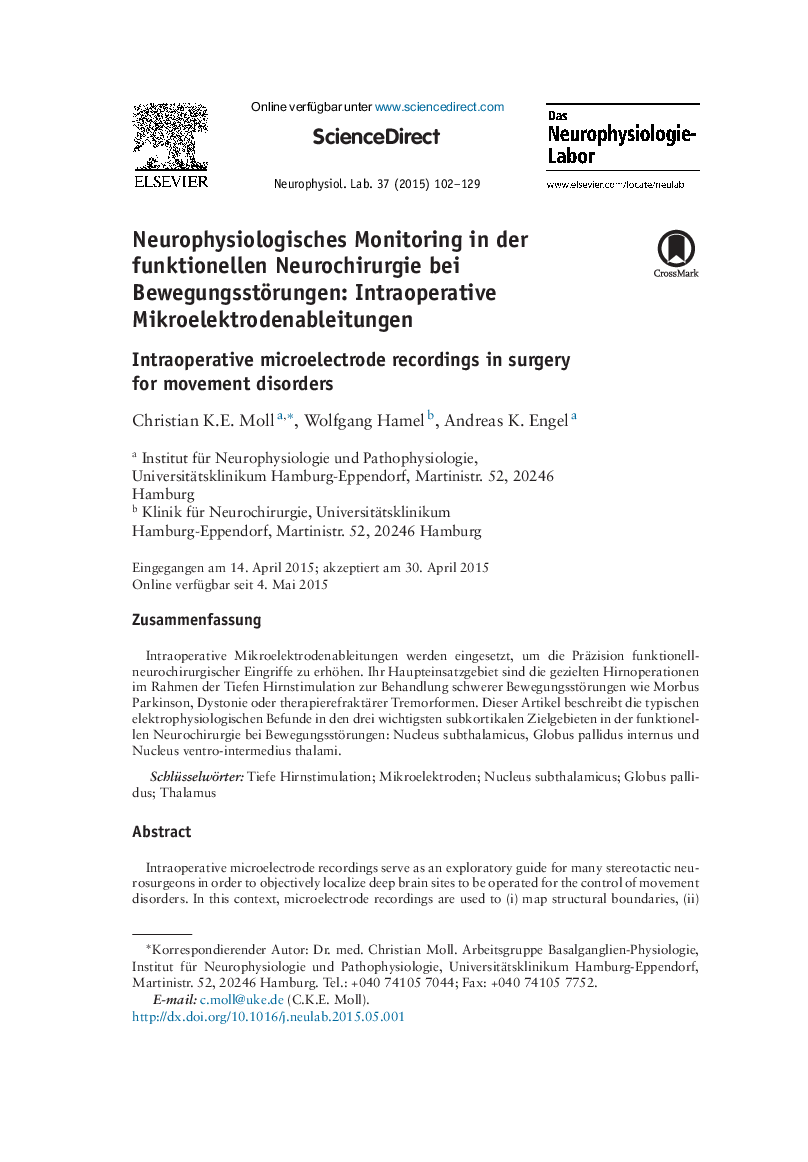| Article ID | Journal | Published Year | Pages | File Type |
|---|---|---|---|---|
| 2684822 | Das Neurophysiologie-Labor | 2015 | 28 Pages |
ZusammenfassungIntraoperative Mikroelektrodenableitungen werden eingesetzt, um die Präzision funktionell-neurochirurgischer Eingriffe zu erhöhen. Ihr Haupteinsatzgebiet sind die gezielten Hirnoperationen im Rahmen der Tiefen Hirnstimulation zur Behandlung schwerer Bewegungsstörungen wie Morbus Parkinson, Dystonie oder therapierefraktärer Tremorformen. Dieser Artikel beschreibt die typischen elektrophysiologischen Befunde in den drei wichtigsten subkortikalen Zielgebieten in der funktionellen Neurochirurgie bei Bewegungsstörungen: Nucleus subthalamicus, Globus pallidus internus und Nucleus ventro-intermedius thalami.
Intraoperative microelectrode recordings serve as an exploratory guide for many stereotactic neurosurgeons in order to objectively localize deep brain sites to be operated for the control of movement disorders. In this context, microelectrode recordings are used to (i) map structural boundaries, (ii) provide a physiologic delineation of the sensorimotor territory within the surgical target and (iii) to identify and localize neuronal activities related to pathologic brain function such as tremor or dystonia. This article provides an overview of discharge characteristics of single cell activity in the three most common targets for movement disorder surgery: subthalamic nucleus (STN), pars interna of the globus pallidus (GPi) and thalamic nucleus ventro-intermedius (Vim).
